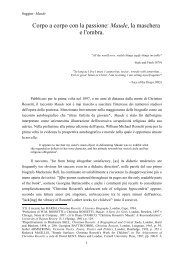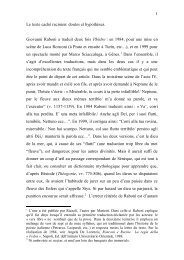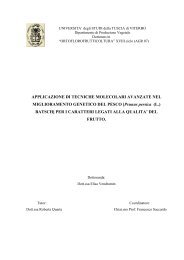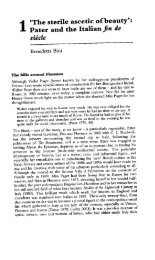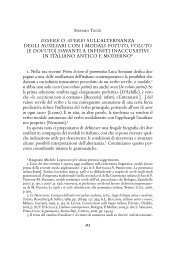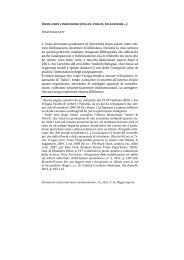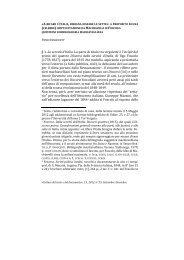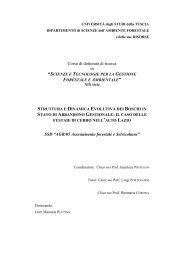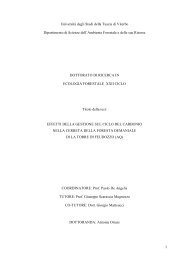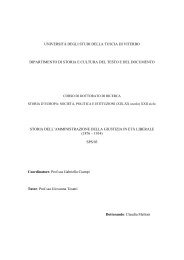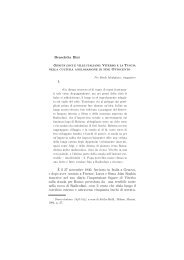drivers of soil respiration of root and microbial ... - Unitus DSpace
drivers of soil respiration of root and microbial ... - Unitus DSpace
drivers of soil respiration of root and microbial ... - Unitus DSpace
You also want an ePaper? Increase the reach of your titles
YUMPU automatically turns print PDFs into web optimized ePapers that Google loves.
For grassl<strong>and</strong>s, the nature, frequency <strong>and</strong> intensity <strong>of</strong> disturbance plays a key role in the C<br />
balance. In agricultural systems, l<strong>and</strong> use <strong>and</strong> management act to modify both the input <strong>of</strong> organic<br />
matter via residue production, organic fertiliser application, grazing management <strong>and</strong> the rate <strong>of</strong><br />
decomposition (by modifying microclimate <strong>and</strong> <strong>soil</strong> conditions through crop selection, <strong>soil</strong> tillage,<br />
mulching, fertiliser application, irrigation <strong>and</strong> liming) (IPCC, 1997). Management practices that<br />
increase <strong>soil</strong> <strong>and</strong> <strong>root</strong> <strong>respiration</strong> cause short-term effluxes <strong>of</strong> CO2 to the atmosphere, whilst<br />
practices that increase the rate <strong>of</strong> decomposition <strong>of</strong> organic matter lead to longer-term losses <strong>of</strong> <strong>soil</strong><br />
organic carbon in the form <strong>of</strong> carbon dioxide. Herbage harvesting by cutting also results in carbon<br />
exports from grassl<strong>and</strong> plots. Most <strong>of</strong> the carbon harvested <strong>and</strong> stored in hay or silage will be<br />
released as CO2 to the atmosphere shortly after harvest. In a cutting regime, a large part <strong>of</strong> the<br />
primary production is exported from the plot as hay or silage, but part <strong>of</strong> these C exports is<br />
compensated for by farm manure <strong>and</strong> slurry application. Under intensive grazing, up to 60 % <strong>of</strong> the<br />
above ground dry matter production is ingested by domestic herbivores (Lemaire <strong>and</strong> Chapman,<br />
1996). However, this percentage can be much lower during extensive grazing. The largest part <strong>of</strong><br />
the ingested carbon is digestible (up to 75% for highly digestible forages) <strong>and</strong>, hence, is respired<br />
shortly after intake. Only a small fraction <strong>of</strong> the ingested carbon is accumulated in the body <strong>of</strong><br />
domestic herbivores or is exported as milk. Large herbivores, such as cows, respire approximately<br />
one ton C per year (Vermorel, 1995). Additional carbon losses occur through methane emissions<br />
from the enteric fermentation. However, grazing practices which increase grassl<strong>and</strong> productivity<br />
have the potential to increase SOC <strong>and</strong> C sequestration (Conant et al. 2001).<br />
Fig. 6 Carbon cycle in grazed grassl<strong>and</strong>. The main carbon fluxes (t C ha -1 yr -1 )<br />
are illustrated for grassl<strong>and</strong> grazed continuously by cattle at an annual stocking<br />
rate <strong>of</strong> two livestock units per ha (Soussana et al., 2004)<br />
21




